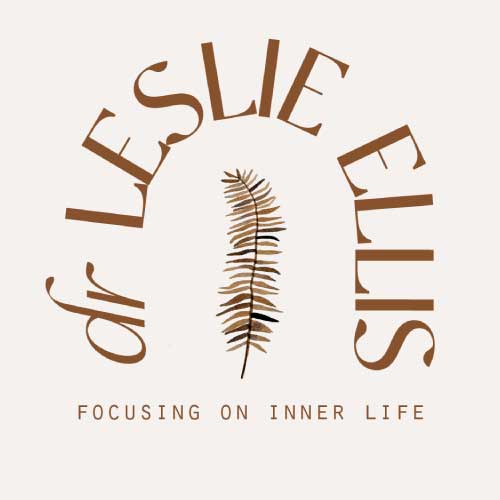In our lives, and in our clinical practice, we have all encountered the inner critic, and it can be a true impediment to connecting deeply with ourselves from the inside. Although everyone has a different version, the basic experience is the same: that of a repetitive and demeaning refrain that knows our particularly sensitive spots and sends critical messages right to that target. Often just as we (or our clients) start to feel good and strong, an inner voice enters that deflates us, telling us we are not [smart/successful/good/good-looking/talented…] enough.
In my 20 years of clinical practice, I have encountered many versions of the inner critic and find that the more trauma someone has suffered, the more intense this inner voice becomes. I think it’s in part because as children, we rely so much on our caregivers that if something is wrong with the relationship, it is too scary to blame those we rely on for our very survival. So the badness must be inside of us. It is a protective idea that helps at the time but that outlives its usefulness. However, because it was acquired at a young age, it often feels ‘true’ and is accepted without question. It is a revelation to some to simply say, you don’t have to believe your inner critic. You might want to consider its origin and question its message.
The inner critic is an ancient survival mechanism
Neuroscience expert Dan Siegel says the inner critic originates in our internal ‘checker,’ the vigilant part of ourselves that enabled our ancestors to survive. Those who were most alert to danger, and to something being wrong were more likely to survive and to pass on their genetic heritage. However, unchecked, it can manifest in many unhelpful ways: OCD, anxiety and also as the inner critic. This idea normalizes the voice, and also gives us a bit of objective distance from it. The inner critic is not something to believe without question, especially as we now live in a world where physical survival is rarely at stake.
Siegel’s suggestions for working with the inner critic are: to get curious about the nature of that voice, notice what brings it up and what it wants for you. Or more often, what it doesn’t want for you. Then thank it for doing that and mutually try to figure out a better way to work together.
Thoughts are not the same as facts. Just because something enters our mind doesn’t mean we have to believe it’s true. This may seem obvious, but very often people in the grip of an internal attack do not stop to question the veracity of their thoughts. In depressed clients, I have often seen them make up a whole story that makes themselves wrong or bad, maybe involving other people they imagine are thinking disparaging things about them – and then react as though this entire fantasy is real. I like to label these thought trails as fantasy. Then I invite them to use inner focusingto inquire into the origin of this felt sense, and to tend to it from there. When the source of the self-criticism is tended to, the critic tends to shift and soften too.
The critic often has its roots in childhood, and from that vantage point, the message might make more sense, because it actually was or felt like it was true at the time. Or it somehow offered necessary protection. I suggest my clients give the critic a new job. Update the critic on the current situation, enlist their constructive help. The critic can become an ally.
Reassign the ‘Loyal Soldier’
I like to use the story of the loyal soldier here. This is the story of Hiroo Onoda, a Japanese soldier who refused to surrender after World War Two ended. He spent 29 years in the jungle on an island in the Philippines, engaged in his military duties (and killing 30 people!). He remained there until 1974, because he truly did not believe that the war had ended.
During his time on the island, he ignored search parties and leaflets sent from Japan to get him to surrender, dismissing them as ploys. He was finally persuaded to emerge after his ageing former commanding officer was flown in to personally relieve him of his duties. Still dressed in a tattered uniform, he handed over his Samurai sword and went home to Japan where he was greeted. He became a rancher and survival training teacher. He died in 2014 at age 91.
This story suggests many things I think are true of the inner critic: that the critic has good intentions and is protective in some way, that it is operating on an outdated set of orders that it will not easily give up, and that in order to shift its energy to something more constructive, it needs to be acknowledged, thanked, relieved of its duties and reassigned. It needs to know the war is over and it can put its sword down.
Because the inner critical voice is thought-based, sometimes cognitive techniques (in addition to focusing) can be helpful. Therapist and author Rick Hanson suggests thought-labelling: “Oh – anxiety. Oh – self-criticism. Oh – alarmist thinking.” This has been shown in research to do two good things in the brain: it increases activity in prefrontal regions that are involved with executive control, and it lowers the activity in the amygdala, reducing the sense of alarm.
Hanson refers to an idea that originated with Jung: the concept of the self as a committee of various parts. “If the brain is a committee, the chair of the committee, roughly, tends to live right behind the forehead. So when you increase activation of the chair of the committee, who in effect is then able to say to the self-critical member of the committee, “Oh, we hear you already. We got it. Enough already. Hand the microphone to somebody else.”
Recruit your inner cheerleader
To combat our natural tendency toward the negative, I suggest finding the cheerleader or support person to sit on your ‘inner committee’ – and if you don’t have one, recruit one. Just as the inner critic is often a composite of all of the authoritative and judgmental aspects of important people in your life, you can find or create a composite of those who supported you most, or simply evoke a person or character that can be that for you. Then, when you notice the inner critic speaking, you could turn to the inner support person and ask for their opinion. It’s also like asking, what would the person who supports and loves you most say to that critical statement or idea? Let this sink in and be a counterweight to the critic. Over time, you will find that the inner world will become a more benign and supportive place.

